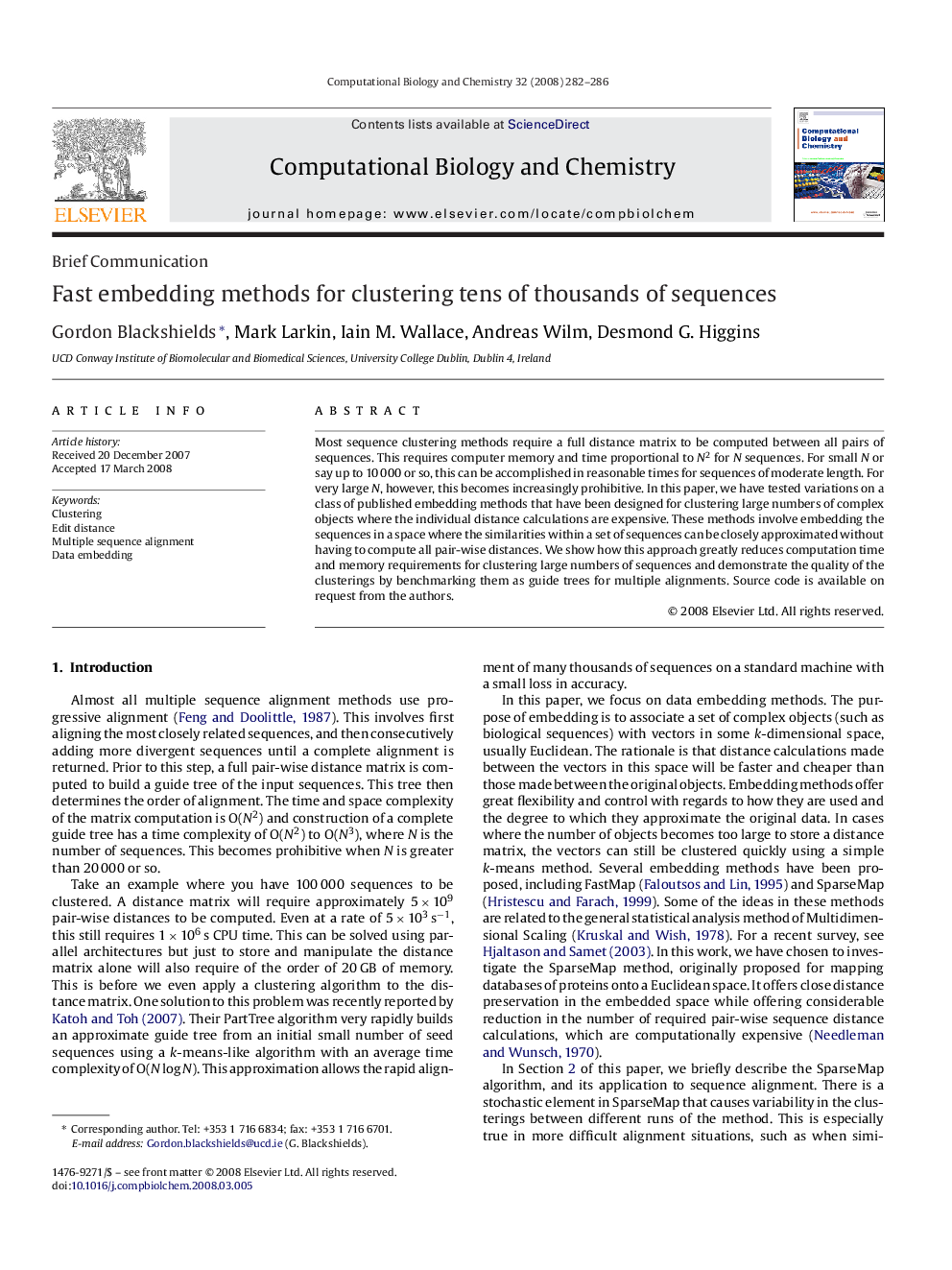| کد مقاله | کد نشریه | سال انتشار | مقاله انگلیسی | نسخه تمام متن |
|---|---|---|---|---|
| 15354 | 1406 | 2008 | 5 صفحه PDF | دانلود رایگان |

Most sequence clustering methods require a full distance matrix to be computed between all pairs of sequences. This requires computer memory and time proportional to N2 for N sequences. For small N or say up to 10 000 or so, this can be accomplished in reasonable times for sequences of moderate length. For very large N, however, this becomes increasingly prohibitive. In this paper, we have tested variations on a class of published embedding methods that have been designed for clustering large numbers of complex objects where the individual distance calculations are expensive. These methods involve embedding the sequences in a space where the similarities within a set of sequences can be closely approximated without having to compute all pair-wise distances. We show how this approach greatly reduces computation time and memory requirements for clustering large numbers of sequences and demonstrate the quality of the clusterings by benchmarking them as guide trees for multiple alignments. Source code is available on request from the authors.
Journal: Computational Biology and Chemistry - Volume 32, Issue 4, August 2008, Pages 282–286